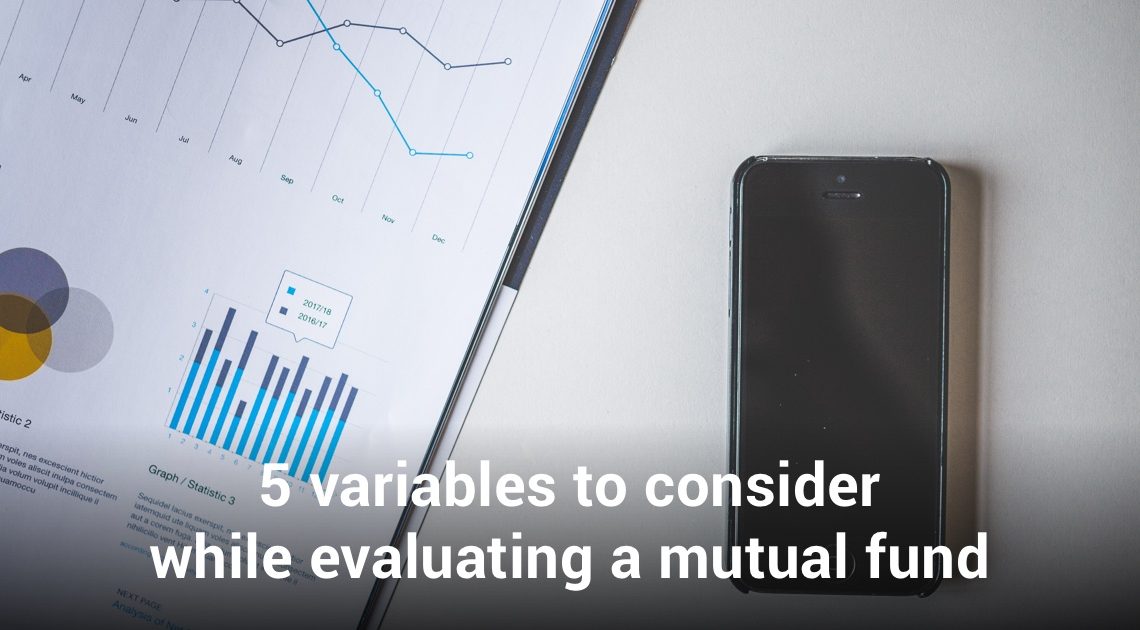
One of the common mistakes new investors make is trying to gauge the performance of the mutual fund by looking at its past performance. This method can be used to evaluate other investment vehicles but is not a good indicator when it comes to mutual funds.
Mutual funds, being a basket of diversified assets have a number of variables at play when it comes to evaluating them, their past performance is just one of the many variables that should be considered while selecting the right mutual fund. There are a number of other variables that can be much more helpful in evaluating the future performance of a mutual fund. These variables have been mentioned below.
1. Expense Ratio
Mutual funds cost money to operate and these expenses are met by the expense ratio of the fund. The expense ratio is a small percentage of the returns that are used to meet the operational costs of the fund. A higher expense ratio does not necessarily mean the fund will provide you with lower returns and a lower expense ratio does not necessarily mean that the fund will provide you with higher returns. The average expense ratio of a particular fund category should be compared with the expense ratio of the individual fund if a fund’s expense ratio is lower than the average expense ratio for its category it can be considered a healthy fund and vice versa. A fund’s expense ratio also includes the commission and fees paid to brokers, if an investor invests through a direct plan rather than a regular plan the expense ratio also comes down as there are no fees or commissions charged on these plans.
2. Diversification
The number of holdings a fund has and the number of sectors it is diversified among depends on the category the fund is performing within. Therefore, it is a good idea to check the category average for the number of holdings and see if the fund matches these numbers. If a fund has more holdings or fewer holdings than the category average further study should be conducted to determine the reason behind this. Funds that are diversified across market sectors have smaller exposure to concentration risks. Concentration risks arise when a fund is heavily invested in a particular sector that is not performing well.
3. Turnover Ratio
The turnover ratio of a mutual fund shows the percentage of a fund’s holdings that have been changed in the previous financial year. A fund with a low turnover ratio can indicate a buy and hold strategy being implemented by the fund manager. A fund with a high turnover ratio possibly demonstrates the fund manager’s aggressive investment strategy and this could increase the operational costs of the mutual fund and, thereby, increase the expense ratio of the fund.
4. Tax Efficiency
When considering long-term investments many investors overlook the tax implication attached to the investments. Investors should be fully aware of the tax implications of the fund to have a clear picture of the actual returns of the funds after taxation.
5. Strategy Changes
When it comes to actively managed funds, large deviations from the original investment strategy mentioned in the fund’s mandate can indicate trouble. If a large-cap fund consistently drifts towards investments in the mid-cap sector, this can indicate that the fund is not performing well within its category or the fund manager has found some new opportunities within other market sectors.
6. Fund Manager
For actively managed funds it is important to check the tenure of the fund manager. Fund Managers in an actively managed fund are continuously striving to outperform the benchmark index of the fund. When looking at past performance of the fund it is important to consider any changes in the management of the fund, as the fund manager and his team could be the secret to its success. If a fund has been performing well for the past three years, but the fund manager’s tenure has been only for the past year, this performance is not certain.
By using these parameters while evaluating a mutual fund you will be making a well-informed decision, as these will give you multiple perspectives on the performance of the fund and will also help you evaluated the risk associated with each mutual fund in more detail.


 Make small investments for bigger returns.
Make small investments for bigger returns.

